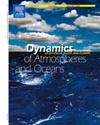Role of atmospheric and oceanic processes on decadal change of Antarctic sea-ice between 2000–2019
Abstract
In this study, recent decadal changes in Sea Ice Concentration (SIC) and Sea Surface Temperature (SST) between the decade of 2010–2019 and 2000–2009 have been studied in the Antarctic regions of the Southern Ocean. Satellite-derived the Advanced Very High-Resolution Radiometer (AVHRR) showed the significant dominance of the decadal increase of SIC in both eastern and western Antarctic sea-ice regions. The maximum decadal increase of SIC has been observed in the Bellingshausen and Amundsen Sea (BAS) sectors of the Antarctic sea-ice regions. The AVHRR data also showed a decadal decrease for SST, but changes are weak compared to SIC. The above observed decadal change of SIC and SST are reasonably well simulated by a global ocean sea-ice coupled model, known as the Modular Ocean Model of version 5 with Sea Ice Simulator (MOMSIS). A simple mixed-layer heat budget analysis has been performed using the model MOMSIS to quantify the contribution of various ocean and atmospheric thermodynamics processes. The significant role of ocean horizontal advection and vertical entrainment has been observed along with atmospheric heat fluxes for a strong decadal increase of SIC in the BAS sectors of the Antarctic sea-ice. The strength of recent decadal variability in the Antarctic sea-ice regions critically depends on both oceanic processes and atmospheric fluxes. Decadal weakening of wind stress and increase of negative wind curl also have a dominant role in association with the decadal increase of SIC in the Antarctic regions of the Southern Ocean.

 求助内容:
求助内容: 应助结果提醒方式:
应助结果提醒方式:


